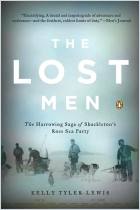
Read offline
Recommendation
When British explorer Sir Ernest Shackleton was busy saving his crew after a shipwreck in the Antarctic in 1914, you would guess that he wasn’t thinking much about teaching leadership lessons. But author Dennis N.T. Perkins uses Shackleton’s expedition to show how the leadership principles the explorer exercised can be applied to your work. He even adds modern case studies as illustration. This excellent book is at its best when it describes Shackleton’s courageous rescue. He led his men to safety through a frozen wilderness by focusing on the ultimate goal of survival, setting a personal example, overcoming conflict, minimizing status differences, stressing teamwork and applying other essential leadership qualities. Though the principles may sound familiar, the book provides a dramatic new view of them, and it is written in a clear, crisp style. getabstract recommends it to all corporate explorers.
Take-Aways
About the Authors
Dennis N. T. Perkins, Ph.D. is President of the Syncretics Group, a consulting organization serving large corporate clients and focusing on effective leadership in demanding environments. He has a B.S. from the U.S. Naval Academy, an M.B.A. from Harvard University and a Ph.D. from the University of Michigan. Margaret P. Holtman is director of employee development at Hartford Life. Paul R. Kessler is a managing consultant at Stromberg Consulting. Catherine McCarthy, Ph.D. , is a consultant with Organizational Psychologists.


















Comment on this summary or Iniciar a Discussão